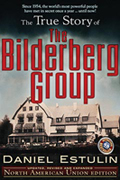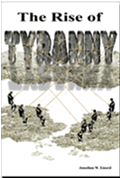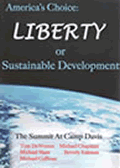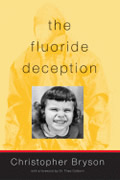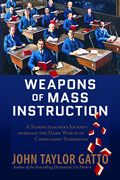THE
FOUR CARDINAL ERRORS THAT ALMOST DESTROYED AMERICA
PART 5
By Professor
Steven Yates
January 9, 2010
NewsWithViews.com
[Author’s note: this article is dedicated to the memory of William C. Yates Jr. -World War II Submarine Veteran, patriot, devoted husband of 57 years to my mother, and devoted father to my sister and myself- who passed away on Deccember 23, 2009 at age 86.]
I.
The twentieth century saw the rise of new institutions for the financial domination of nations. The Bank for International Settlements was founded in 1930. Its two main founders were Hjalmar Schacht, a Rhodes Round Tabler who later became Hitler’s Reich Minister of Economics, and Montagu Norman, Governor of the Bank of England and a Fabian. The Bank for International Settlements would be the central bankers’ central bank, and therefore a major power center. About it Carroll Quigley would write:
“[T]he powers of financial capitalism had another far reaching aim, nothing less than to create a world system of financial control in private hands able to dominate the political system of each country and the economy of the world as a whole. This system was to be controlled in a feudalist fashion by the central banks of the world acting in concert, by secret agreements, arrived at in frequent private meetings and conferences. The apex of the system was the Bank for International Settlements in Basle, Switzerland, a private bank owned and controlled by the world’s central banks which were themselves private corporations. The growth of financial capitalism made possible a centralization of world economic control and use of this power for the direct benefit of financiers and the indirect injury of all other economic groups” (Tragedy & Hope, p. 324).
Member central banks of the Bank for International Settlements soon included all those of Western European nations as well as that of major Eastern powers such as Japan. Obviously, the Federal Reserve was a member.
The Fabian Society role is not obvious. For some reason, Quigley was uninterested in them as a group. Fabians always worked in the background. They did not seek publicity. They were more interested in results, and they sought evolution, not revolution. They saw no need for open coercion when infiltration, persuasion through subterfuge, and the subtle conditioning of malleable populations would do the job (penetration and permeation, as we saw in Part 4). Capitalism certainly appeared to be the ‘incredible bread machine,’ producer of wealth and prosperity. The Marxian complaint, echoed by the Fabians, was that capitalism could produce but not distribute equitably. Yet in this view, it was a crucial step in the evolution of economies—its establishment a necessary condition for the emergence of genuine socialism. Genuine socialism, in this view, was not what was had developed in the Soviet Union, where the Bolsheviks had tried to build socialism on an agrarian base without having gone through the capitalist stage. The most that could have happened there, again in this view, was a corrupt state-capitalism, a system every sane observer eventually realized was delivering worse injustice and brutality than anything in the British-American world.
The Fabians therefore began to change their tactics. They sought not to destroy capitalism but to transform it from within, using devices we have encountered such as the subversion of education (led by the Fabian John Dewey) to produce those malleable, manageable masses instead of informed, independent-minded individuals. The British-American superelite would further Fabian goals. David Rockefeller Sr. is arguably among the most powerful and well-connected of today’s superelites—and very much a capitalist in the new mode. He’d studied at the Fabian-founded London School of Economics (LSE) in the 1930s and written a senior thesis entitled Destitution Through Fabian Eyes, as recounted in his Memoirs (2002, p. 75-76). David Rockefeller’s vision of a globalized world led him to the helm of the Council on Foreign Relations and would lead him to assist in founding the European Bilderberg Group in 1954. He would regularly attend its top-secret annual meetings which, for several days, would transform plush hotels into armed enclaves with carefully selected staff members sworn to secrecy.
He would help found the Council of the Americas in 1965. Eventually, in the early 1970s, he would read fellow globalist Zbigniew Brzezinski’s Between Two Ages: America’s Role in the Technetronic Era (1970). This book described history as a process moving away from “nationalism” (i.e., national sovereignty) through Marxism to a globalism that would be essentially a merger of capitalism and what was then called communism. With Brzezinski and Henry Kissinger, Rockefeller would organize the Trilateral Commission—all the while continuing in his ongoing role as overlord of the CFR. The Trilateral Commission propelled Jimmy Carter into the White House and would maintain a central presence in all subsequent administrations regardless of party affiliation. All these groups were pursuing Fabian goals whether the rank and file knew it or not—and most surely did not. That is, they had become agents of Fabian permeation.
II.
In sum, one envisions the Fabians and those they mentored as having taken an implicit fresh look at a key Marxian thesis: in order to create conditions for global socialism, the world needs global capitalism. The superelite began to think in those terms. Their efforts shifted from building global socialism to removing all barriers to an aggressive if micromanaged global capitalism. The Fabians had had control over the Democratic Party at least since 1960; John F. Kennedy Jr. had also studied at (where else?) the LSE. The “liberals” had built on the collectivism of the Rooseveltian welfare state with the “war on poverty” and such programs as “affirmative action” for women and minorities. Soon, the false opposition would appear. By the start of the 1980s we were hearing from “neoconservatives”—neocons—educated in such hotbeds of Fabian permeation as New York’s City College and Columbia University (where Brzezinski had taught). The first wave of neocons penned books with titles like Two Cheers For Capitalism (1978) by the late Irving Kristol, father of one of today’s neocon leading lights William Kristol, and Breaking Ranks by neocon Norman Podhoretz (1980). What would masquerade as a “conservative” intellectual renaissance began that would ultimately ruin the Republican Party by the time it had run its course (2008, end of the Bush II era).
The Reagan years spoke of “morning in America”; the truth was, with the rise of the neocons the Fabians had begun the capture of the Republicans. One of the newest mantras would be free trade. It began with so-called enterprise zones. This idea, to all appearances, was the brainchild of one Stuart M. Butler—a policy analyst at the Heritage Foundation, who published two seminal essays on the subject in 1979 and 1980 respectively. The idea was not Butler’s, however. Sir Geoffrey Howe, Chancellor of the Exchequer of Great Britain, had introduced it to Parliament. Howe, in turn, had acquired the idea from Professor Peter Hall, an urban planner based at Reading University. Professor Hall had developed the concept of a “freeport” as a means of developing the depressed inner city—creating unabashedly capitalist enclaves, within which “workers parties” could also be established. Professor Hall was a Fabian—on the Society’s executive committee.
The idea would spread among conservatives who assumed it had originated with one of their own. Howe led the way in merging the idea with that of the free trade zone, which when enlarged to encompass multiple nations would dismantle tariffs, customs and duties. Managed globalist capitalism would be unleashed via so-called free trade agreements (FTAs). The antecedent to these was, of course, the General Agreement on Trade and Tariffs (GATT) which was signed back in the 1940s as part of the process that included Bretton Woods and the UN, with the founding of satellite organizations such as the World Bank and the International Monetary Fund. In theory, globalist free trade would raise the level of prosperity for all. Economists spoke of putting “comparative advantage” to work. In practice, it allowed corporations to move operations to where labor was cheapest, least organized and least educated; where environmental standards were lax; and where the cooperation of local officials could be guaranteed through bribes and other forms of corruption. Wall Street soared; Main Street suffered. A few analysts led by Paul Craig Roberts would finally break ranks and offer their theory of “absolute advantage” (see especially the article he co-authored with Charles Schumer in the New York Times, Jan. 6, 2004. For a detailed account of how Fabian-managed globalist capitalism would destroy indigenous peoples, economies and cultures, see John Perkins, Confessions of an Economic Hit Man, 2004).
Globalist capitalism in practice, unlike its theoretical classical-liberal, laissez faire and libertarian images (which many libertarians unfortunately struggled to maintain), had made peace with Fabian-derived welfare-statism. It had few qualms about cooperating with expansionist government—provided, of course, that those in government embraced globalism. The neocons at its helm in America saw themselves as the vanguard of a new manifest destiny: taking “liberal democracy” to the rest of the world, in echo of what Cecil Rhodes had envisioned for British society almost a century ago. The neocons would form liaisons of convenience with, e.g., the so-called Religious Right. Although they were materialists in practice, such a liaison enabled them to get many of their people elected to office by masquerading as Christians. Once in office, of course, they continued the secularist agenda. Example: abortion. Republicans are constantly running on anti-abortion sentiment. Yet not one Republican elected to high national office has lifted a finger to stop the practice. Leading neocons have furthered the New International Economic Order, not Christianity. They have no more real interest in spiritual matters than they have in quantum physics.
While we would hear a lot of rhetoric about the need for competitiveness and the evils of protectionism, there would also be no more desire for genuine competition among the upper-echelon players than there had been among the robber barons of the late 1800s. We were approaching a new turning point, where economic coercion would become the norm as entire industries were destroyed and people were forced out of work. The once-thriving textile industry is an example. Former textile workers were told, in effect, to “reinvent themselves” for the “jobs of the future” (i.e., cooperate or starve). Almost none understood what was happening to them. Who were the upper-echelon players? The ideal participants in this system were multinational and transnational corporations whose only loyalties were to money and power—those Brzezinski had lauded back in 1970 in Between Two Ages. They had none to nationality, and this meant the fulfillment of CFR and Trilateral Commission member Richard Gardner’s call for the slow erosion “piece by piece” of national sovereignty (CFR journal Foreign Affairs article “The Hard Road to World Order,” 1974). It would shortly be clear to anyone who knew what to look for: the globalist process being furthered by Fabian-permeated superelites, and the sovereignty of the U.S. under our Constitution, were on collision course; also on collision course was this process and the continuation of a financially independent middle class in America.
The two collisions came with the passage of the North American Free Trade Agreement (NAFTA) in 1993—yet another pivotal event which had the support of the Bushes, the Clintons, and even talk-show host Rush Limbaugh who otherwise bashed Bill Clinton mercilessly (the incongruity here went unnoticed). What public debate over NAFTA had taken place was overshadowed by mainstream media reportage on O.J. Simpson. In such ways America’s masses were easily distracted. NAFTA went into effect on Jan. 1, 1994, and began a long-term exodus of millions of manufacturing jobs from the U.S. What replaced them were so-called “service sector” jobs which required a quite different skill set and paid considerably less. Since the Federal Reserve was pumping unprecedented quantities of printing-press money into circulation and the Dow was soaring to record heights, the economy “boomed.” Further empowering the boom was the explosion in changing technology including the cell phone, the Internet, the iPod, and so on. Clearly if you didn’t have a six-figure job in the newly-emerged, fast-paced tech sector, it was your own fault! As a result, few people noticed the seismic shift that was taking place.
While some of the major innovators (e.g., Apple, Microsoft, Amazon.com) survived, the “tech boom,” built up on the Fed’s credit expansion, proved unsustainable overall. “Dot-coms” went out of business by the thousands. The losses in manufacturing jobs continued. Several writers had begun calling our trade policies a “race to the bottom” (see Alan Tolenson, The Race to the Bottom, 2002). By the middle of the decade the number of job losses had risen to over 2.4 million.
|
Subscribe to the NewsWithViews Daily News Alerts! |
Personal debt was skyrocketing, however, as a “housing boom” replaced the “tech boom”—another unsustainable bubble. When people could not pay their debts, they were foreclosed on; foreclosures were soon at record highs. The average American’s savings rate had gone negative. For part six click below.
Click here for part -----> 1, 2, 3, 4, 5, 6,
� 2010 Steven Yates - All Rights Reserved






